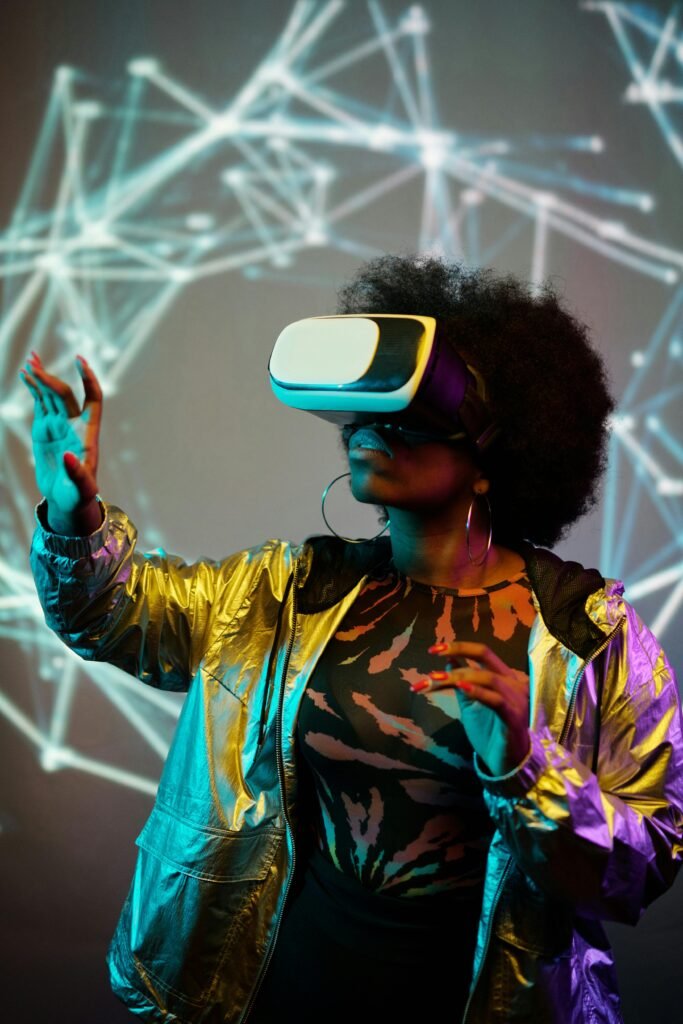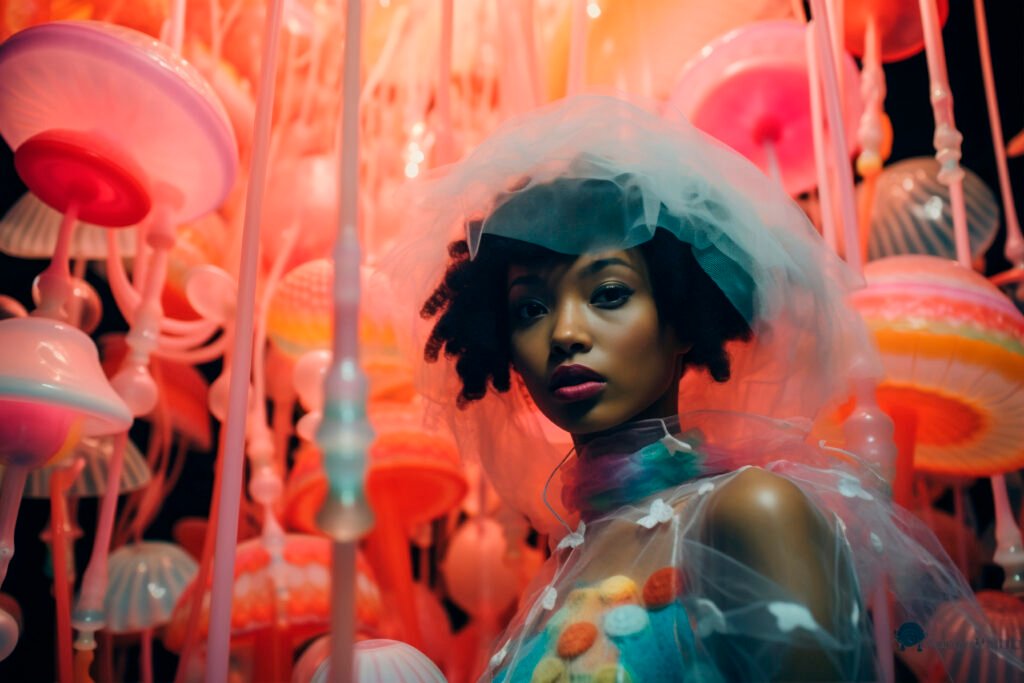Future of Fashion
Table of Contents
Introduction: The Intersection of Fashion and Technology
As the future of fashion evolves, technology is quickly becoming one of its most significant influences. Fashion brands and designers are now merging innovation with creativity to offer experiences we never thought possible. From virtual try-ons to AI-designed garments, the fashion industry is rethinking style at every level. With tech advancements, the future of fashion is more sustainable, accessible, and personalized, making it an exciting time for both designers and consumers.

The Rise of Smart Fabrics and Wearable Tech in Fashion
Smart fabrics and wearable technology are pioneering the future of fashion, offering clothing that does more than look good. These new materials can adapt to body temperature, monitor health metrics, and even charge your devices. Brands like Google and Levi’s have created “smart jackets” that can answer phone calls or play music with just a tap. This innovation not only enhances functionality but also redefines what we expect from our clothing. In the future of fashion, clothes will not just make a statement but will also become an extension of our digital lives.
AI in Fashion: Personalization and Predicting Trends
Artificial Intelligence is taking personalization to new heights in the future of fashion. AI-driven algorithms analyze shopping patterns, helping brands recommend styles that fit individual preferences and trends. Companies like Stitch Fix use AI to curate personalized clothing choices for customers. This technology goes beyond style suggestions by helping brands predict fashion trends with impressive accuracy. The future of fashion will feature collections crafted to suit both individual tastes and market demands, making shopping a uniquely tailored experience.
3D Printing: Revolutionizing Fashion Design and Manufacturing
3D printing is a game-changer in the future of fashion, allowing designers to create intricate, customized pieces on demand. This technology minimizes waste by printing only what is needed, leading to more sustainable production. Fashion designers can experiment with shapes and patterns previously impossible to achieve by traditional means. From accessories to full outfits, the possibilities are expanding. As 3D printing advances, the future of fashion will see more accessible, customized, and eco-conscious designs that break traditional production boundaries.

Virtual and Augmented Reality: Transforming Shopping Experiences
Imagine trying on clothes without stepping into a dressing room. In the future of fashion, Virtual and Augmented Reality (VR and AR) allow customers to visualize how items will look on them before purchasing. Many brands, including Gucci and Zara, are already integrating AR into their online stores for virtual try-ons. VR offers immersive experiences, such as virtual fashion shows, where customers can engage with a brand without being there physically. As AR and VR technologies grow, the future of fashion will make shopping an entirely new and exciting digital experience.
Blockchain and Fashion: Ensuring Transparency and Authenticity
Blockchain technology is playing a critical role in the future of fashion by promoting transparency and authenticity. Blockchain allows consumers to trace the journey of a garment from its origin to the store, ensuring ethical practices and reducing counterfeits. Luxury brands like LVMH and Prada have embraced blockchain to protect their products’ authenticity. As consumers demand more accountability from brands, blockchain could be key to a more transparent and responsible future of fashion.

Sustainable Fashion Tech: Innovations in Eco-Friendly Materials
Sustainability is central to the future of fashion, with technology paving the way for eco-friendly materials and processes. New fibers made from recycled plastics, biodegradable textiles, and innovations like lab-grown leather are transforming how fashion impacts the planet. Brands are also using waterless dyeing processes and energy-efficient factories to reduce their environmental footprint. As sustainability becomes a top priority, the future of fashion will rely on tech-driven solutions to produce stylish, ethical clothing.
Digital Fashion: The New Frontier of Virtual Clothing
Digital fashion is redefining what it means to “wear” clothing in the future of fashion. From entirely digital collections to virtual clothing for avatars, digital fashion opens up a realm where consumers buy items they may never physically wear. Designers can experiment without the constraints of physical production, while consumers can enjoy unique, innovative styles. Companies like DressX are leading the way in this space, showing that the future of fashion is not limited to physical boundaries but extends into digital worlds as well.

The Impact of Social Media and AI-Driven Influencers on Fashion
Social media and AI influencers are shaping the future of fashion by setting trends in real-time. Virtual influencers like Lil Miquela have millions of followers, influencing brand campaigns and customer choices. With AI-driven fashion recommendations on platforms like Instagram and Pinterest, consumers can discover new styles seamlessly. This technology allows brands to tap into AI’s vast data to refine marketing strategies, making social media a powerhouse for reaching and engaging with customers in the future of fashion.
Challenges and Ethical Considerations in Fashion Technology
While the future of fashion is exciting, it also raises ethical questions. Technology may make fashion more efficient, but it can also lead to privacy concerns with data tracking and challenges related to labor displacement due to automation. Ensuring that technology benefits everyone in the fashion chain—from workers to consumers—will be a critical goal for the industry. As we look forward, balancing innovation with ethical responsibility will define the future of fashion.

Conclusion: What Does the Future Hold for Fashion and Technology?
The future of fashion is full of opportunities, with technology transforming every aspect of the industry. From the materials used to make clothes to the ways consumers shop and interact with brands, fashion is becoming more personalized, efficient, and sustainable. As we embrace these advancements, the future of fashion will continue to blur the lines between digital and physical worlds, making style an ever-evolving experience.
How is technology changing the fashion industry?
Technology is transforming the fashion industry in various ways, including the use of artificial intelligence for personalized shopping experiences, 3D printing for on-demand production, and smart fabrics that offer functional benefits like moisture-wicking or temperature regulation. These advancements help brands create more innovative, efficient, and sustainable fashion.
What role does AI play in fashion?
AI plays a crucial role in fashion by analyzing consumer data to predict trends, optimize inventory, and create personalized shopping experiences. For instance, AI algorithms can suggest products based on a customer's past purchases and preferences, improving the overall shopping experience and increasing sales for brands.
What are smart fabrics, and how are they used in fashion?
Smart fabrics are textiles embedded with technology that allows them to interact with the wearer or their environment. They can monitor health metrics, change color, or even provide heating or cooling. Brands like Ralph Lauren and Under Armour have developed smart clothing that tracks fitness data, enhancing both performance and user experience.
How is digital fashion defined, and why is it gaining popularity?
Digital fashion refers to virtual clothing designed for online platforms, avatars, and social media. It is gaining popularity as consumers seek unique and expressive ways to showcase their style in digital spaces. Brands like DressX and Balenciaga have embraced digital fashion, allowing users to purchase and wear virtual outfits without contributing to physical waste.
What are the sustainability benefits of integrating technology into fashion?
Integrating technology into fashion can lead to more sustainable practices by reducing waste and promoting responsible sourcing. Innovations like 3D printing allow for on-demand production, minimizing overstock. Additionally, blockchain technology enhances transparency in the supply chain, helping consumers make informed choices about the sustainability and ethical practices of brands.
